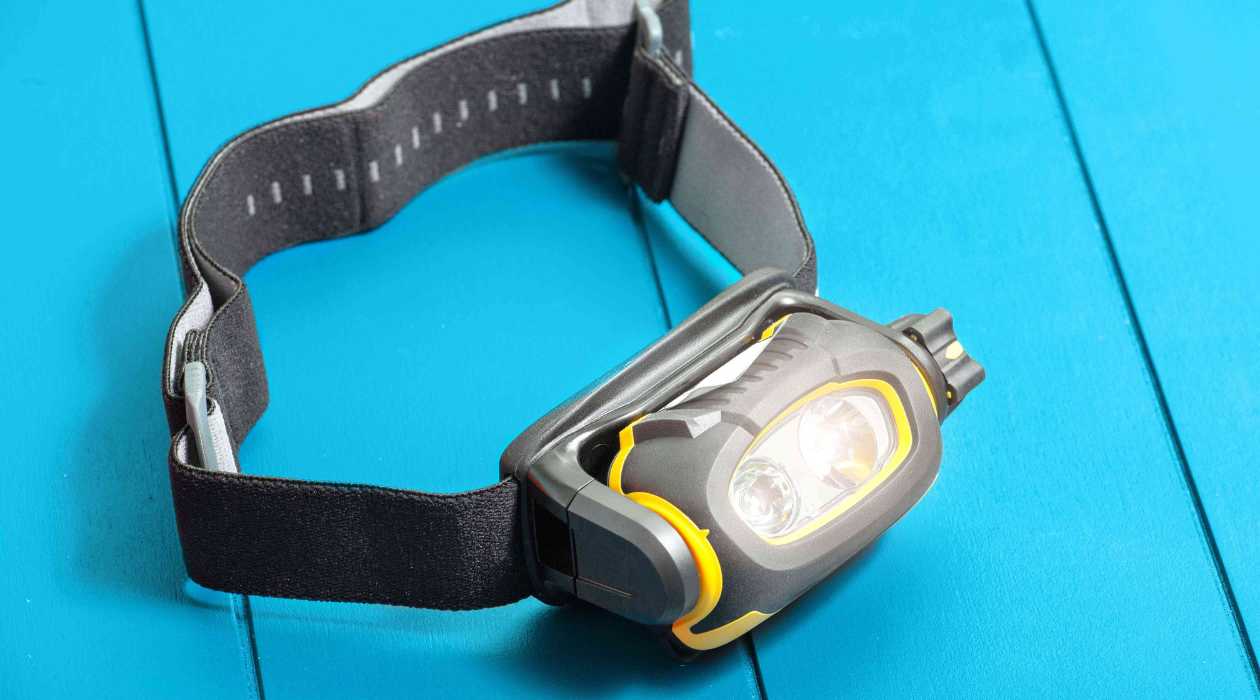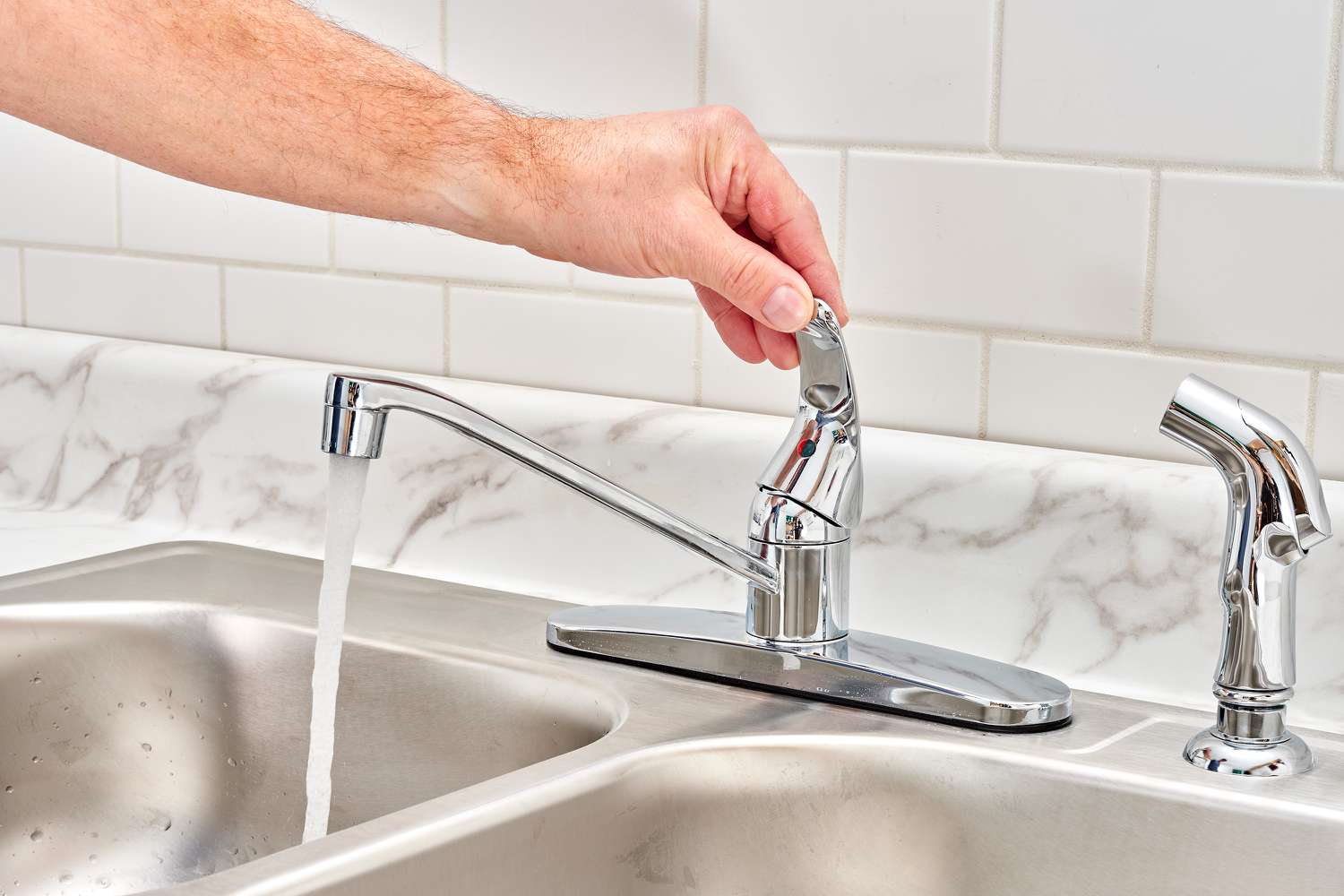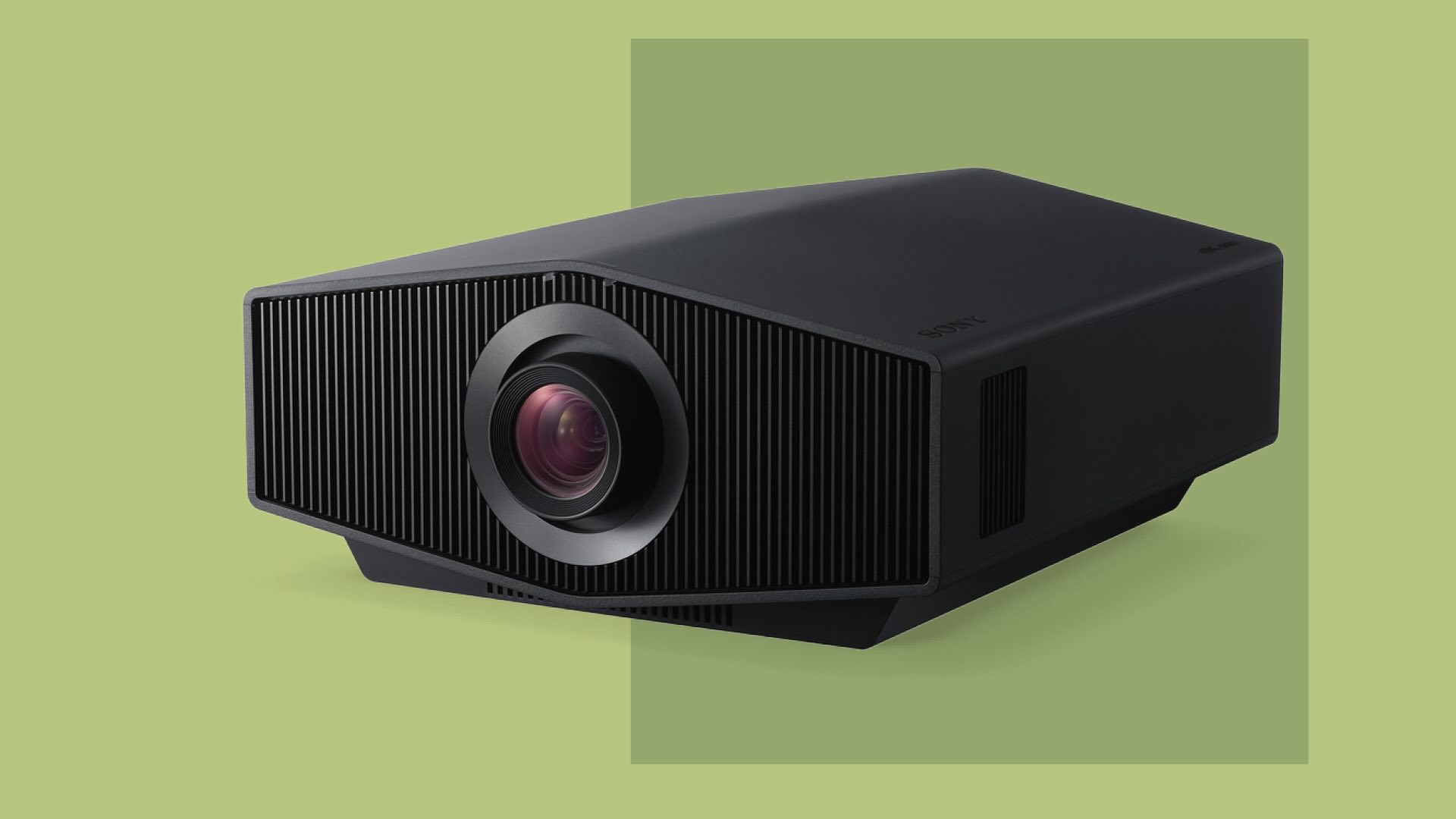

Furniture
What Is A Headlamp
Modified: March 1, 2024
Discover the benefits of using a furniture headlamp for enhanced visibility and convenience. Find out how this handy tool can improve your woodworking and DIY projects.
(Many of the links in this article redirect to a specific reviewed product. Your purchase of these products through affiliate links helps to generate commission for Storables.com, at no extra cost. Learn more)
Introduction
A headlamp is an essential piece of equipment used for illumination in various activities and industries. From outdoor adventurers and campers to workers in mines and construction sites, headlamps provide a convenient and hands-free lighting solution. This article will delve into the world of headlamps, exploring their definition, history, types, components, functionality, common uses, advantages, and important considerations when choosing one.
Whether you’re exploring a dark trail, tinkering with a car engine in low light conditions, or simply needing to navigate through a dimly lit area, a headlamp can be an invaluable tool. Unlike handheld flashlights, headlamps allow you to keep your hands free and direct the beam of light wherever you look.
Modern headlamps have evolved to be lightweight, compact, and comfortable to wear. They offer a range of lighting options and features, making them versatile for a wide variety of tasks and environments. Whether you’re a professional in a specialized field or an outdoor enthusiast, understanding the different aspects of headlamps can help you make an informed decision when choosing the right one for your needs.
In the following sections, we will illuminate your knowledge with the fascinating history of headlamps, explore the various types available in the market, examine their key components, delve into how they work, and discuss the common uses and advantages of using headlamps. Additionally, we will provide important considerations to keep in mind when selecting the perfect headlamp for your specific requirements.
Key Takeaways:
- Headlamps have evolved from ancient oil lamps to modern LED-powered devices, offering hands-free illumination for outdoor activities, professional industries, and emergency situations, enhancing safety and efficiency.
- When choosing a headlamp, consider factors such as brightness, battery life, comfort, durability, and additional features to ensure it meets your specific needs, providing a reliable lighting solution for various activities and scenarios.
Definition of a Headlamp
A headlamp, also known as a headlight or a head torch, is a portable lighting device that is worn on the head. It consists of a housing that holds one or more light sources, such as light bulbs or LED bulbs, and a strap or headband that secures the housing to the user’s head. The light sources are typically enclosed by a lens or reflector, which helps to focus and direct the beam of light.
Headlamps are designed to provide hands-free illumination, allowing users to have both their hands free to perform tasks or activities in dimly lit or dark environments. The light beam can be adjusted to different angles, allowing the user to direct the light wherever they need it.
Headlamps have become increasingly popular and widely used in various industries and activities. They are commonly used in outdoor pursuits such as camping, hiking, and fishing, where having a reliable source of light is crucial. Headlamps are also commonly used by professionals in fields such as mining, construction, emergency services, and maintenance work.
Headlamps come in a variety of designs and styles, ranging from basic models with a single light source to more advanced ones with multiple brightness settings, adjustable beams, and additional features like waterproofing and rechargeable batteries. The choice of headlamp depends on the specific requirements of the user and the intended use.
Overall, a headlamp is an essential tool that provides convenience, safety, and versatility in various scenarios. Its hands-free functionality and portable design make it a convenient lighting solution for both recreational and professional purposes.
History of Headlamps
The history of headlamps dates back to ancient times when civilizations used rudimentary lighting devices to navigate in dark environments. The first recorded use of a headlamp can be traced back to miners in ancient Rome who used animal fat lamps attached to their helmets to light their way in underground mines.
Over the centuries, headlamp technology advanced gradually. In the 18th century, lamps fueled by whale oil and later by kerosene were used in various applications, including mining, exploration, and military operations. These early headlamps consisted of a simple oil lamp attached to a helmet or a headband.
However, it was not until the late 19th century that headlamp technology saw a significant advancement with the invention of the electric bulb. In 1882, Thomas Edison introduced the first practical incandescent light bulb, which revolutionized lighting systems and allowed for more efficient and brighter illumination.
The introduction of electric bulbs paved the way for electric headlamps. The first electric headlamp was developed in the early 1900s and soon became a popular lighting solution in various industries. Automobile manufacturers started adopting electric headlamps in their vehicles, replacing the previous gas and acetylene lamps used for automobile lighting.
During the mid-20th century, advances in technology led to further improvements in headlamp design and functionality. Incandescent bulbs were gradually replaced by halogen bulbs, which offered brighter and more focused illumination. The development of lightweight and durable materials, such as plastics and composite materials, allowed for the production of more ergonomic and comfortable headlamp designs.
In recent years, the emergence of Light Emitting Diode (LED) technology has revolutionized the headlamp industry. LED bulbs offer numerous advantages over traditional incandescent and halogen bulbs, including longer lifespan, energy efficiency, and improved brightness. LED headlamps have become increasingly popular due to their compact size, enhanced performance, and longer battery life.
Today, headlamp technology continues to evolve rapidly. Modern headlamps feature advanced features such as adjustable brightness levels, multiple lighting modes, rechargeable batteries, and even connectivity options for remote control and customization. With continuous innovations, headlamps have become more efficient, versatile, and user-friendly, catering to a wide range of applications and user preferences.
Overall, the history of headlamps is a testament to human ingenuity and our constant pursuit of better lighting solutions. From simple oil lamps to sophisticated LED headlamps, these devices have evolved to become an essential tool in various industries and activities, enhancing visibility and safety in dark or low-light conditions.
Types of Headlamps
Headlamps come in a variety of types, each designed to cater to specific needs and preferences. These types vary in terms of the light source, brightness levels, battery type, and additional features. Here are some common types of headlamps:
- Basic Headlamps: Basic headlamps typically feature a single light source and a straightforward on/off switch. They are lightweight, affordable, and suitable for everyday use. These headlamps often use incandescent bulbs or LED bulbs and are powered by standard alkaline batteries.
- High-Performance Headlamps: High-performance headlamps are designed for professional use and outdoor enthusiasts who require more advanced features. These headlamps usually offer multiple brightness settings, adjustable beams, and various lighting modes. They commonly use LED bulbs for brighter and more focused illumination. High-performance headlamps often have rechargeable batteries or can be powered by disposable batteries for extended use.
- Waterproof Headlamps: Waterproof headlamps are specially designed to be used in wet or rainy conditions. They feature a sealed housing and components that can withstand water immersion. These headlamps are popular among water-based activities like fishing, boating, and kayaking.
- Ultralight Headlamps: Ultralight headlamps are designed for hikers, backpackers, and other outdoor adventurers who prioritize weight reduction. These headlamps feature minimalist designs with lightweight materials but still offer sufficient brightness for navigation in the dark.
- Headlamps with Red LEDs: Headlamps equipped with red LEDs provide a low-intensity red light option in addition to the standard white light. The red light helps preserve night vision, making these headlamps ideal for stargazing, map reading, and stealth situations.
- Headlamps with Motion Sensors: Headlamps with motion sensors are equipped with sensors that automatically activate the light when they detect movement. This feature is particularly useful when hands-free operation is necessary, such as during nighttime running or cycling.
It’s important to consider your specific requirements and use case when choosing a headlamp. Think about factors like brightness levels, battery life, comfort, and additional features that may be useful in your intended activities. By selecting the right type of headlamp, you can optimize your lighting experience and maximize your performance in various situations.
Components of a Headlamp
A headlamp consists of several key components that work together to provide illumination and ensure functionality. Understanding these components can help you better appreciate the inner workings of a headlamp. Here are the main components of a typical headlamp:
- Housing: The housing is the outer casing that holds all the internal components of the headlamp. It is usually made of durable and lightweight materials such as plastic or metal. The housing is designed to protect the internal components from damage and to provide a secure attachment point for the headband or strap.
- Light Source: The light source is the core component that emits light. Traditional headlamps used incandescent bulbs, but nowadays, most headlamps utilize Light Emitting Diodes (LEDs). LEDs are energy-efficient, provide long-lasting performance, and offer various brightness levels. The light source is typically located at the front of the headlamp, aligned with the lens or reflector.
- Lens or Reflector: The lens or reflector helps to control and direct the light emitted by the light source. It assists in focusing and projecting the light beam in a specific direction. Lenses are often made of clear or diffusing materials, while reflectors are designed to bounce and concentrate the light from the source.
- Power Source: The power source supplies the necessary energy to operate the headlamp. Headlamps commonly utilize disposable batteries such as AA or AAA batteries, but many also offer rechargeable battery options. The power source is typically located inside the housing, and some headlamps have battery compartments or compartments for rechargeable battery packs.
- Switches and Controls: Headlamps feature switches or controls that allow users to turn the light on or off, adjust brightness levels, and switch between lighting modes. The switches can be buttons, sliders, or even touch-sensitive controls, depending on the model and manufacturer.
- Headband or Strap: The headband or strap is used to secure the headlamp to the user’s head. It is typically adjustable to accommodate different head sizes and ensure a comfortable fit. The headband usually wraps around the user’s head, while the strap helps to hold the headlamp securely in place.
- Additional Features: Many headlamps offer additional features to enhance their functionality and convenience. These can include a tilt mechanism that allows users to adjust the angle of the light beam, a red light mode for preserving night vision, a strobe mode for emergency signaling, a lock function to prevent accidental activation, and compatibility with accessories like filters and diffusers.
By understanding the various components of a headlamp, you can make an informed choice when selecting a headlamp model that meets your specific needs. The combination and quality of these components determine the performance, durability, and functionality of a headlamp, making them vital elements in the design and operation of this essential lighting tool.
When choosing a headlamp, consider the brightness, beam distance, battery life, and comfort. Look for a headlamp with adjustable brightness settings and a comfortable headband for extended use.
Read more: What Is a Kegerator and What Is It Used For?
How Headlamps Work
Headlamps use a combination of components and technology to provide a steady and reliable source of light. Understanding how headlamps work can help you appreciate the ingenuity behind these versatile lighting devices. Here’s a simplified explanation of how headlamps function:
1. Power Source: The headlamp’s power source, whether it’s disposable batteries or rechargeable batteries, provides the necessary electrical energy to operate the headlamp.
2. Light Source: The heart of the headlamp is the light source, which is typically an LED (Light Emitting Diode). LEDs are preferred in headlamps due to their energy efficiency, long lifespan, and brightness. The power from the batteries is directed to the LED to generate light.
3. Circuitry: The headlamp contains circuitry that regulates the power flow from the batteries to the LED. This circuitry ensures a consistent and reliable power supply to the LED, preventing any fluctuations or variations in the brightness of the light.
4. Lens or Reflector: The light emitted from the LED is directed and focused by a lens or reflector. The lens helps to diffuse or concentrate the light, while the reflector collects and redirects the light in a specific direction, optimizing the efficiency and reach of the headlamp’s beam.
5. Switches and Controls: Headlamps are equipped with switches and controls that allow users to turn the light on or off and adjust the brightness level. These switches can vary in placement and operation, such as push buttons, sliders, or touch-sensitive controls.
6. Headband or Strap: The headband or strap secures the headlamp to the user’s head, keeping it in position while allowing for comfortable wearability. The adjustability of the headband ensures a secure fit for different head sizes.
7. Additional Features: Some headlamps may have additional features such as tilt mechanisms, which allow users to adjust the angle of the light beam, or different lighting modes like red light for preserving night vision or strobe mode for emergency signaling. These features enhance the versatility and functionality of the headlamp.
When the headlamp is turned on, the power from the batteries is supplied to the LED through the circuitry. The LED converts this electrical energy into visible light, which is then directed and focused by the lens or reflector. The user can control the output and intensity of the light through the switches, allowing them to adapt the headlamp to their specific lighting needs.
By understanding the working principles of headlamps, you can better appreciate their technological sophistication and make the most informed choice when selecting a headlamp for your intended use.
Common Uses of Headlamps
Headlamps are incredibly versatile lighting devices that find applications in various industries and activities. Their hands-free operation, convenience, and reliable illumination make them a popular choice for both professional and recreational use. Here are some of the common uses of headlamps:
- Outdoor Activities: One of the primary uses of headlamps is outdoor activities. Whether you’re camping, hiking, fishing, or exploring, headlamps provide essential lighting in natural environments. They allow you to navigate safely during nighttime adventures and illuminate your surroundings while keeping both hands free for tasks like setting up tents, cooking, or reading maps.
- Emergency Situations: Headlamps are indispensable in emergency situations. They provide a reliable light source during power outages, allowing you to move around safely and perform necessary tasks. Additionally, headlamps with strobe or SOS modes can serve as emergency signaling devices, alerting others to your presence in critical situations.
- Professional Industries: Various professionals rely on headlamps as part of their daily work. This includes miners, construction workers, electricians, mechanics, cave explorers, and search and rescue teams, among others. Headlamps provide hands-free illumination in dark or poorly lit environments, improving safety and efficiency in their respective fields.
- Nighttime Running and Cycling: Headlamps are popular among runners and cyclists who train during the early morning or late evening hours when natural light is limited. They enhance visibility and help athletes navigate trails or roads safely, ensuring they are seen by others on the same path.
- Caving and Spelunking: Exploring caves and caverns requires a reliable light source due to the absence of natural sunlight. Headlamps are commonly used by cavers and spelunkers to provide hands-free illumination as they navigate through the underground passages and observe geological formations.
- Fishing and Hunting: Headlamps with red or green light settings are useful for anglers who need to maintain night vision while tying knots, rigging tackle, or handling bait. Hunters can also benefit from headlamps as they track animals or set up blinds in low light conditions.
- Home and DIY Projects: Headlamps are handy for performing various tasks around the house or for DIY projects. Whether you’re working in cramped spaces, fixing plumbing issues, or doing repairs, headlamps provide focused and hands-free lighting, allowing you to work with precision.
These are just a few examples of the common uses of headlamps. Their versatility and practicality make them valuable tools in a wide range of scenarios, providing illumination and convenience when natural lighting or other lighting sources are insufficient. By having a reliable headlamp on hand, you can confidently tackle any situation that requires hands-free lighting.
Advantages of Using Headlamps
Headlamps offer numerous advantages over traditional flashlights or handheld light sources. Their hands-free operation, convenience, and versatility make them an essential tool in various situations. Here are some of the advantages of using headlamps:
- Hands-Free Illumination: One of the primary benefits of headlamps is that they provide hands-free illumination. By wearing the headlamp on your head or helmet, you can direct the light beam wherever you look, leaving both hands free to perform tasks or activities. This is particularly useful in situations that require manual work or detailed precision.
- Improved Safety: Headlamps enhance safety by providing a steady and reliable source of light. Whether you’re hiking on a dark trail, working in a dimly lit environment, or navigating through an emergency situation, headlamps offer visibility that helps prevent accidents and injuries. They also make you more visible to others, increasing your safety in low-light conditions.
- Convenience and Portability: Headlamps are designed to be lightweight and compact, making them easy to carry and store. They are portable, allowing you to take them anywhere you go, whether it’s camping, hiking, or for emergency preparedness. They take up minimal space in your backpack or pocket, ensuring you always have a reliable light source when you need it.
- Versatility: Headlamps offer versatility in terms of lighting options and features. Many models provide different brightness levels, adjustable beams, and various lighting modes, allowing you to customize the light output based on your specific needs. Additionally, some headlamps offer additional features like red light mode for preserving night vision, strobe mode for signaling, and even compatibility with filters or diffusers for different lighting effects.
- Wide Range of Applications: Headlamps find applications in numerous activities and industries. They are invaluable for outdoor enthusiasts such as campers, hikers, and fishermen, providing a convenient lighting solution in remote or natural environments. Headlamps are also utilized by professionals in fields like mining, construction, emergency services, and maintenance work, where reliable hands-free illumination is essential.
- Energy Efficiency: Most headlamps on the market today utilize LED (Light Emitting Diode) technology. LEDs are known for their energy efficiency, allowing headlamps to provide bright illumination while maximizing battery life. This means longer usage time and less frequent battery replacements or recharging, making headlamps cost-effective and eco-friendly.
- Comfortable Wearability: Headlamps are designed with user comfort in mind. They feature adjustable headbands or straps that ensure a secure and comfortable fit for different head sizes. The lightweight construction and ergonomic design help prevent neck strain or discomfort during extended use.
From convenience and versatility to safety and comfort, headlamps offer a multitude of advantages for various activities and situations. Whether you’re exploring the outdoors, working in demanding environments, or simply in need of a reliable hands-free lighting solution, a headlamp is a valuable tool to have at your disposal.
Important Considerations When Choosing a Headlamp
When selecting a headlamp, it is important to consider several factors that will ensure it meets your specific needs and preferences. Here are some important considerations to keep in mind:
- Brightness: The brightness level of a headlamp is measured in lumens. Consider the activities or environments in which you will use the headlamp and choose a brightness level that suits your needs. Higher lumens are ideal for activities that require long-distance visibility, while lower lumens are suitable for tasks that require close-range lighting.
- Battery Life: Battery life is crucial, especially if you plan to use the headlamp for extended periods or in situations where battery replacement or recharging is not easily accessible. Consider the expected duration of use and opt for a headlamp with a battery life that matches your requirements. Additionally, check the type of batteries required and decide if you prefer disposable or rechargeable options.
- Lighting Modes: Some headlamps offer various lighting modes, such as different brightness levels, strobe mode, red light mode, or SOS mode. Consider the specific lighting modes that would be useful for your activities or situations and choose a headlamp that offers the desired functionality.
- Weight and Comfort: Since you will be wearing the headlamp on your head for extended periods, it’s important to choose a lightweight and comfortable option. Look for headlamps with adjustable headbands or straps, cushioning, and a balanced weight distribution to ensure a secure and comfortable fit. This is especially crucial for activities that require prolonged wear, such as hiking or running.
- Water Resistance: If you anticipate using the headlamp in wet or rainy conditions, consider a headlamp that offers water resistance or waterproof features. This will ensure that the headlamp continues to function reliably even in damp environments, providing peace of mind and preventing any damage from water exposure.
- Durability: Look for a headlamp that is built to withstand the rigors of your intended activities. Consider the materials used in the construction, such as impact-resistant plastics or durable metals, to ensure the headlamp can withstand potential bumps, drops, or rough usage. Additionally, check for any certifications or ratings, such as ANSI FL1 standards, that guarantee the durability and performance of the headlamp.
- Additional Features: Consider any additional features that may be beneficial to your specific needs. This could include a tilt mechanism for adjusting the angle of the light beam, a lock function to prevent accidental activation, compatibility with accessories like filters or diffusers, or even remote control functionality for added convenience.
- Price and Value: Set a budget that aligns with your requirements and consider the overall value offered by the headlamp. Keep in mind that cheaper options may sacrifice quality or features, while more expensive options may offer advanced functions or higher durability. Strike a balance between price and value based on your specific needs and intended use.
By taking these important considerations into account, you can make an informed decision when choosing a headlamp that best fits your requirements. Remember, finding the right headlamp that suits your needs and preferences will enhance your overall experience and ensure you have a reliable lighting solution for your activities.
Conclusion
Headlamps have come a long way since their humble beginnings, offering a convenient and hands-free lighting solution for a wide range of activities and industries. With their versatility, reliability, and practicality, headlamps have become an essential tool for professionals, outdoor enthusiasts, emergency situations, and everyday tasks.
Throughout history, headlamps have evolved from simple oil lamps attached to helmets to sophisticated LED-powered devices with adjustable beams, diverse lighting modes, and additional features. They have revolutionized various industries and activities by providing a reliable source of illumination that enhances safety, convenience, and efficiency.
When choosing a headlamp, it is important to consider factors such as brightness, battery life, comfort, durability, and additional features to ensure it meets your specific needs. Whether you’re planning a camping trip, working in a dimly lit environment, or preparing for an emergency situation, selecting the right headlamp will be crucial in optimizing your lighting experience.
Headlamps offer numerous advantages, including hands-free operation, improved safety, versatility, and portability. They enhance visibility in dark or low-light conditions, leaving your hands free to perform tasks or activities. Headlamps are widely used in outdoor activities, professional industries, emergency situations, and everyday tasks.
As technology continues to advance, headlamps are becoming more energy-efficient, durable, and feature-rich. With options such as adjustable brightness, multiple lighting modes, waterproofing, and compatibility with accessories, headlamps can be tailored to suit specific preferences and requirements.
In conclusion, headlamps have become an indispensable tool in various industries and activities. Their hands-free functionality, convenience, and reliable illumination provide practical solutions for a wide range of scenarios. By understanding the different types, components, and considerations when choosing a headlamp, you can make an informed decision and reap the benefits of this versatile lighting device.
Frequently Asked Questions about What Is A Headlamp
Was this page helpful?
At Storables.com, we guarantee accurate and reliable information. Our content, validated by Expert Board Contributors, is crafted following stringent Editorial Policies. We're committed to providing you with well-researched, expert-backed insights for all your informational needs.













